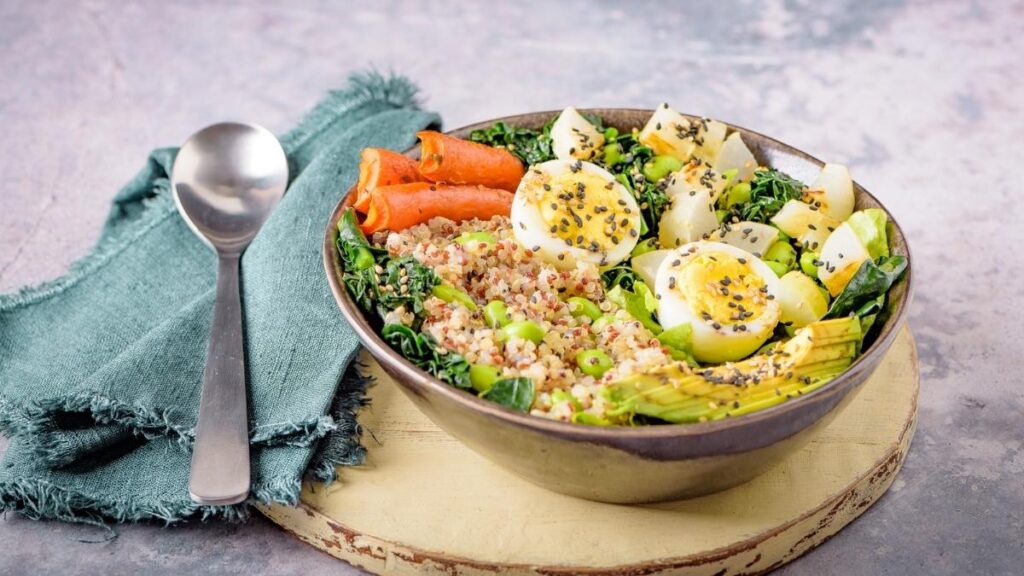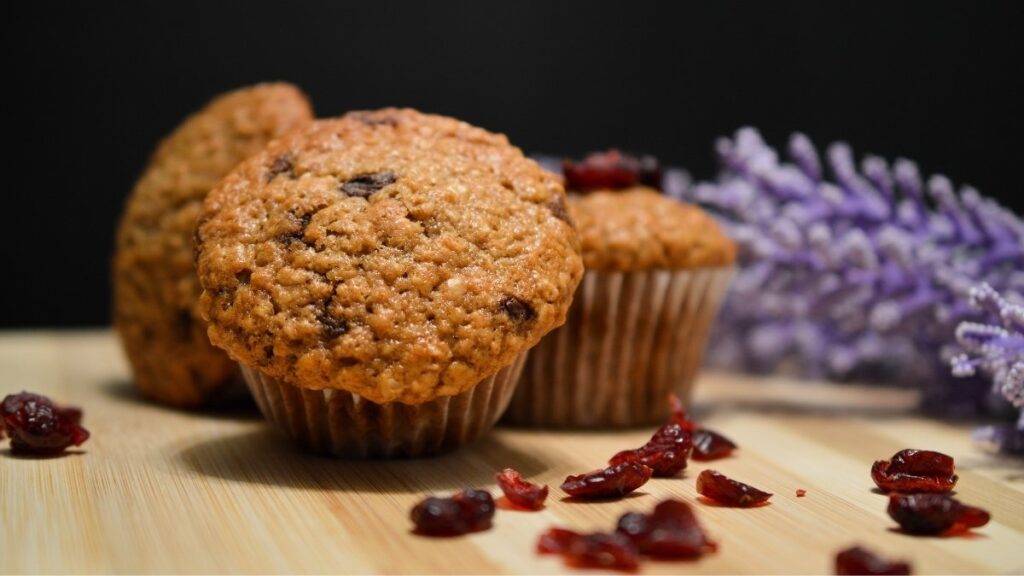12 Best Breakfasts for Fibermaxxing: Trending Senior Wellness You’ll Want To Try
You’ve seen “fibermaxxing” on TikTok, but this 2025 wellness trend is more than just hype—it’s a critical health strategy for seniors.
The shocking truth? Over 90% of adults 60+ are dangerously fiber-deficient, a gap linked to heart disease, poor blood sugar control, and digestive issues.
Forget extreme diets; the secret to better health is hiding in your breakfast bowl. This guide decodes “fibermaxxing” into a safe, actionable plan, revealing 12 delicious, high-fiber breakfasts you’ll actually want to eat.
1. Avocado Toast with Hemp Seeds

This powerhouse breakfast starts the day with a significant fiber boost and healthy fats. A single cup of avocado provides approximately 10 grams of fiber.
Topping a slice of high-fiber, whole-grain bread with this avocado and an ounce of sunflower or hemp seeds can add another 3.36 grams of fiber, creating a satisfying and nutrient-dense meal.
The efficacy of this breakfast comes from the blend of fiber types. Avocados are a rich source of both soluble and insoluble fiber.
This combination supports a healthy gut microbiome by feeding beneficial bacteria and promotes regular bowel movements, addressing a common concern for older adults. This pairing also enhances satiety and can help stabilize blood sugar levels.
For a senior-friendly adaptation that accommodates dental concerns, a high-fiber whole-wheat bread that is very soft is recommended. If chewing toast is difficult, the mashed avocado can be mixed with the hemp seeds and served alongside soft-scrambled eggs, which are also a recommended soft food.
2. Chia Pudding

Chia pudding is an exceptionally simple and versatile method for “fibermaxxing” the morning meal, offering a remarkable 10 grams of fiber per one-ounce serving of seeds.
The preparation involves combining two tablespoons of chia seeds with a half-cup of milk and refrigerating the mixture overnight, or until it achieves a pudding-like consistency.
This breakfast is particularly beneficial for senior digestive health. Chia seeds form a gel-like substance due to their high soluble fiber content.
This gel moves slowly through the digestive system, which promotes a feeling of fullness and aids in healthy bowel movements, offering significant relief from constipation, a prevalent issue in the elderly population.
To create a complete meal, the pudding can be topped with soft fruits, such as mashed raspberries or sliced bananas. For individuals who are sensitive to the texture of the seeds, the chia pudding can be blended with a banana and a splash of milk, creating a smooth, drinkable, and high-fiber smoothie.
3. Oatmeal with Sliced Almonds and Berries

A classic for its proven benefits, oatmeal provides a fiber-rich foundation for a balanced breakfast. A single cup of cooked oatmeal contains 4 grams of soluble fiber.
By adding other high-fiber ingredients like fresh raspberries (which contain 8 grams of fiber per cup ) and sliced almonds, this simple bowl is transformed into a high-impact, fiber-packed meal.
The science behind oatmeal’s benefits lies in its high concentration of beta-glucans, a specific type of soluble fiber.
This fiber has been scientifically demonstrated to help lower “bad” LDL cholesterol levels and stabilize blood glucose after meals , both of which are critical for heart health and diabetes management in seniors.
If whole almonds present a chewing challenge, they can be swapped for a tablespoon of ground flaxseed (which adds 3.5 grams of fiber ) or a spoonful of smooth almond butter. Opting for quick-cook oats or allowing rolled oats to soak in hot water will result in a softer, easier-to-manage consistency.
4. Sweet Potato Toast

This innovative, gluten-free breakfast uses a nutrient-dense vegetable as its base. A large sweet potato contains nearly 6 grams of fiber. To prepare, the raw sweet potato is thinly sliced and the slices are roasted in an oven until tender, creating a sturdy, vitamin-rich “toast” for various toppings.
Sweet potatoes are an excellent source of both dietary fiber and potent antioxidants like Vitamin A, which support immune function and overall wellness.
The fiber content in sweet potatoes helps to slow digestion, thereby preventing the sharp blood sugar spikes that can be caused by traditional bread made from refined grains. This makes it an intelligent choice for metabolic health.
This “toast” can be topped with other soft, high-fiber ingredients to ensure the meal is easy to consume. Options include mashed avocado, a smear of smooth peanut butter, or a scoop of cottage cheese, all of which are suitable for soft diets.
5. Vegetable and Avocado Omelet

This breakfast option turns a protein-centric meal into a high-fiber one. While eggs provide high-quality protein, the fiber content (estimated at 5 grams per omelet) is derived entirely from the add-ins.
A whole avocado can contain 9.2 grams of fiber, and other fiber-rich vegetables like artichokes, spinach, or broccoli further increase the total.
The combination of protein and fiber is ideal for senior wellness. Protein is essential for supporting muscle maintenance, while the fiber provides sustained, slow-release energy and promotes satiety.
This breakfast is also naturally low in carbohydrates, making it an excellent choice for managing blood sugar levels from the start of the day.
For an easy-to-manage version suitable for those with chewing difficulties, the vegetables should be finely chopped and sautéed until very soft before being added to the eggs. This recipe can also be prepared ahead of time as baked “egg muffins” in a tin, which are soft, portable, and easy to eat.
How to “Fibermaxx” Your Breakfast
3 Simple Swaps for a Fiber-Packed Start!
BEFORE: White Toast
~1g fiberAFTER: 1 slice High-Fiber Whole-Grain Toast
5g+ fiberFIBER BOOST: 400%!
BEFORE: 1 cup Plain Cereal
~2g fiberAFTER: 1 cup Cereal + 1 cup Raspberries + 1 Tbsp Chia Seeds
TOTAL: 15g fiberA fruity, seedy upgrade!
BEFORE: Fruit Juice
0g fiberAFTER: Blended Smoothie with 1 cup Spinach, 1 Tbsp Flax, 1/2 cup Oats
TOTAL: 6.5g fiberBlend in the goodness!
6. Quinoa Bowl with Eggs and Veggies

Quinoa is a high-fiber (5 grams per cup) and high-protein pseudocereal that serves as a fantastic base for a savory breakfast. It is a complete plant-based protein and a good source of essential minerals like iron and magnesium.
A warm bowl of cooked quinoa can be topped with a soft-boiled egg, cheese, and sautéed vegetables.
The fiber in quinoa, working in concert with its protein, provides long-lasting energy and satiety. This helps to prevent mid-morning energy crashes and reduces cravings for high-sugar snacks.
For seniors, a warm, savory breakfast like this is also an excellent vehicle for incorporating more fiber-rich vegetables in a soft, highly digestible format.
To adapt this for a soft-food diet, the quinoa can be cooked with extra water or broth to create a softer, more porridge-like texture. Using finely minced, well-cooked vegetables like spinach or mushrooms and topping the bowl with a soft-scrambled egg makes the entire meal easy to chew and digest.
7. Breakfast Salad

While unconventional, a breakfast salad is a modern and refreshing way to meet daily fiber goals, offering 3 to 6 grams of fiber per cup from the leafy greens alone. This meal typically starts with a base of spinach or arugula and is topped with a hard-boiled egg, seeds, beans, and other fruits or vegetables.
This breakfast provides an incredible diversity of plant fibers, which is a core principle of “fibermaxxing”. A diverse fiber intake is crucial because it feeds a wider range of beneficial gut bacteria, supporting a robust gut microbiome.
A healthy microbiome, in turn, can boost the immune system and even help regulate mood.
If raw greens are difficult to chew or digest, this concept can be adapted into a “warm breakfast salad.” This would involve using a base of soft-wilted spinach, adding roasted and soft root vegetables, a hard-boiled egg, and a simple vinaigrette, ensuring the meal is still high-fiber but also soft-textured.
8. Protein Smoothie with Berries and Flax

A smoothie is one of the most effective and senior-friendly ways to create a high-fiber meal. The strategy involves combining a protein powder, a liquid base, high-fiber berries, and ground flaxseed. A single tablespoon of ground flaxseed adds 3.5 grams of fiber , while a cup of raspberries can add another 8 grams.
This meal is ideal for “fibermaxxing” safely, as the blending process effectively “chews” the ingredients. This action breaks down tough insoluble fibers , making the nutrients and fiber highly accessible and easy to digest. This is a perfect solution for seniors with dental challenges or swallowing difficulties.
To enhance the fiber content even further, a scoop of plain psyllium husk or a half-cup of rolled oats can be added before blending. This addition provides more soluble, cholesterol-lowering fiber, and the use of a high-quality protein powder makes it a complete, balanced meal.
9. Yogurt Parfait with Raspberries

This breakfast option has the appeal of a dessert but functions as a fiber-maxxing workhorse. The parfait is constructed using a base of plain Greek yogurt for protein, which is then layered with high-fiber raspberries (8 grams per cup) and a high-fiber granola or muesli.
The combination of probiotics from the yogurt and the prebiotic fiber from the raspberries creates a powerful symbiotic effect.
This synergy is highly effective at promoting a healthy gut microbiome. This breakfast is a potent tool for digestive health, while the soluble fiber from the berries also assists in managing blood sugar.
For a senior-friendly adaptation, fresh or thawed frozen raspberries can be mashed to create a “sauce” that requires no chewing.
Instead of a crunchy, hard-to-chew granola, the parfait can be sprinkled with two tablespoons of “soft” fiber sources like chia seeds (10g fiber per ounce) or ground flaxseed (3.5g fiber per tbsp).
10. Apple Slices with Nut Butter and Cinnamon

This simple, grab-and-go breakfast is a fiber-maxxing favorite. A medium apple, consumed with the skin on, contains approximately 4.5 grams of fiber.
When paired with two tablespoons of a nut butter like peanut or almond, the meal is enhanced with protein, healthy fats, and an additional 2-3 grams of fiber.
The “proof” for this breakfast lies in its dual-fiber action. The apple skin provides insoluble fiber , which helps to “scrub” the digestive tract. The apple’s flesh provides soluble fiber, which promotes fullness.
The nut butter amplifies the satiety factor, making this a surprisingly effective breakfast for weight management.
If apple skins are too tough to chew, there are two excellent adaptations. First, the apple can be cored and baked in an oven or microwave until it is soft and tender. Second, a “deconstructed” bowl can be made using unsweetened applesauce, a scoop of smooth peanut butter, and a sprinkle of cinnamon.
11. High-Fiber Cereal with Berries and Milk

A bowl of cereal is a breakfast staple, but “fibermaxxing” requires a specific choice. Consumers should look for cereals that list a whole grain, wheat bran, or psyllium as the primary ingredient. A single cup of a dedicated high-fiber cereal, such as Raisin Bran, can offer 7 grams of fiber.
This is one of the most straightforward ways to meet daily fiber goals. The benefits are well-documented: wheat bran, a source of insoluble fiber, is highly effective at adding bulk to stool and relieving constipation.
Adding high-fiber berries, like raspberries or blackberries, contributes soluble fiber, which in turn helps to lower cholesterol.
For seniors, the key adaptation is to let the cereal sit in the milk for a few minutes to soften. This makes it significantly easier to chew while retaining all of the fiber benefits. Alternatively, hot, bran-based cereals provide an even softer, more digestible meal option.
12. High-Fiber Muffins

Muffins offer a convenient, make-ahead breakfast, but standard bakery muffins are often high in sugar and low in fiber.
To “fibermaxx” a muffin, it must be baked with high-fiber ingredients, such as coconut flour (10 grams of fiber per quarter-cup) or almond flour. Recipes can also incorporate fiber-rich produce like carrots, rhubarb, or bananas.
By baking muffins at home, one gains complete control over the ingredients. Fiber-rich elements like ground flaxseed, chia seeds, or even psyllium husk can be added directly to the batter.
This process transforms a simple muffin into a functional food that can aid in blood sugar management and digestive regularity.
A highly effective pro-tip is to prepare “Baked Banana-Nut Oatmeal Cups” or “Pumpkin Protein Overnight Oats” in a muffin tin.
These “muffins” are soft, moist, easy to eat, and packed with the soluble fiber from oats, making them a perfect senior-friendly, high-fiber breakfast.
Conclusion
“Fibermaxxing” is far more than a fleeting social media trend; it’s a powerful wellness strategy that is especially critical for senior health.
The reality is that over 90% of adults 60+ are not getting the fiber they need, but you don’t need to resort to extreme measures.
By focusing on delicious, whole-food breakfasts, you can help protect your heart, manage blood sugar, and dramatically improve your digestive health. Remember to start slowly, stay hydrated, and consult your doctor about this new wellness plan.
A Senior’s Guide to Fibermaxxing Tools
Here is some additional content, as requested, that you can include in the article. This section provides actionable advice on supplements and tracking, which are key components of the “maxxing” trend.
While getting fiber from whole foods is always the best approach, supplements and tracking apps can be useful tools to help you safely and effectively reach your goals.
Gentle Fiber Supplements for Seniors
For some older adults, meeting daily fiber goals through food alone can be difficult, especially during an adjustment period. If your doctor agrees, a supplement can help bridge the gap.
For Heart Health and Regularity: Psyllium husk (commonly found in Metamucil) is a high-viscosity, gel-forming soluble fiber. It is well-researched and known to be effective for both promoting regularity and helping to lower “bad” LDL cholesterol levels.
For Sensitive Stomachs: Methylcellulose (commonly found in Citrucel) is a gentler, non-fermentable fiber. This means it is much less likely to cause the gas and bloating that can sometimes be a side effect of other fibers, making it an excellent choice for those with sensitive digestive systems.
A critical safety rule for any fiber supplement is to start with a small dose, drink at least a full eight ounces of water with it, and take it separately from medications, as high-fiber supplements can affect their absorption.
Helpful Tracking Apps for 2025
The “maxxing” part of the trend implies tracking your progress. A nutrition app can be a simple way to monitor your daily intake and see where you can make improvements.
When choosing an app, the most important feature is an accurate and large food database. Apps like MyFitnessPal and Cronometer are often recommended because they allow you to see entries that have been “checked” or “verified” for accuracy.
A pro-tip for seniors is to use the app not just to hit a total fiber number, but to ensure you are eating a diversity of fiber-rich foods—such as fruits, vegetables, nuts, and whole grains—which is essential for building a healthy and robust gut microbiome.








